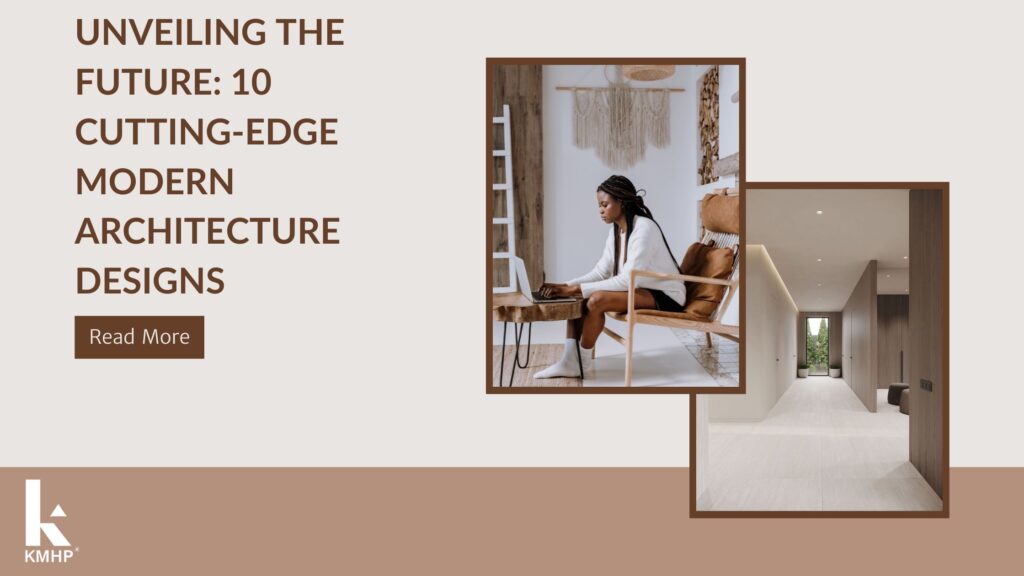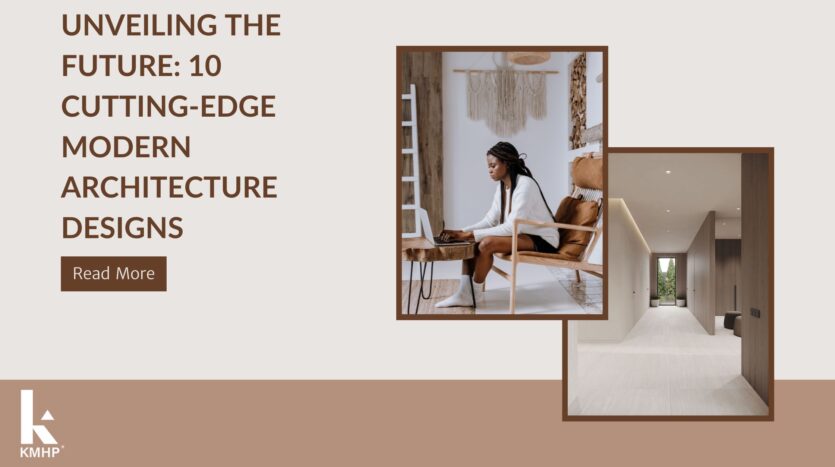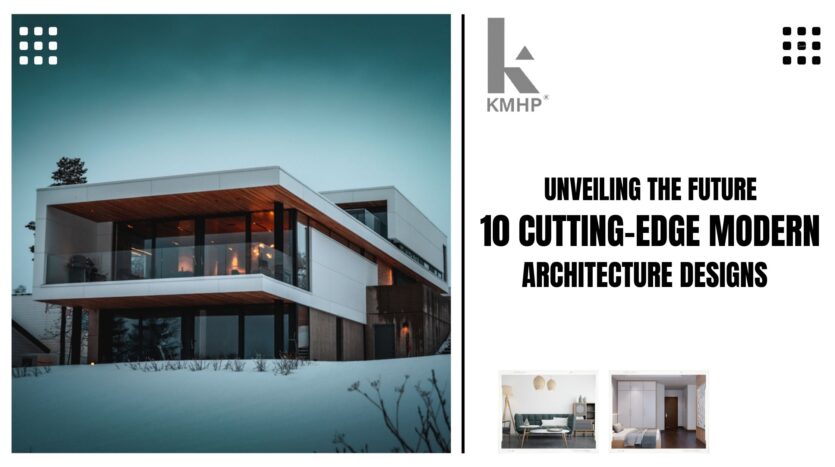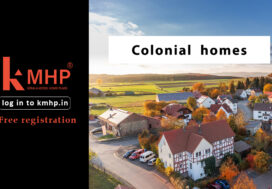Architecture has come a long way in recent years, with groundbreaking modern architecture designs that push the boundaries of what we thought was possible. From sustainable and eco-friendly buildings to futuristic cityscapes and smart connected buildings, the architecture of the future is all about innovation, creativity, and cutting-edge technology. In this article, we’ll take a closer look at 10 of the most exciting modern architecture designs, showcasing the latest trends and techniques that are shaping the world we live in. Whether you’re a professional architect or simply someone with a passion for design and technology, these awe-inspiring structures are sure to capture your imagination and inspire you to think differently about the built environment.

Sustainable and Eco-Friendly Architecture
Sustainability is no longer just a buzzword; it’s a necessity for the planet’s survival. Here are three modern architecture designs that prioritize sustainability.
1. Green Roofs and Living Walls
Green roofs and living walls are becoming increasingly popular in modern architecture. By covering roofs with vegetation or incorporating living walls, buildings can reduce urban heat island effects, improve air quality, and provide insulation.
2. Passive Solar Design
Passive solar design uses sunlight to heat and cool buildings, reducing the need for artificial heating and cooling systems. This design includes features like large windows, thermal mass materials, and shading devices.
3. Net-Zero Energy Buildings
Net-zero energy buildings produce as much energy as they consume. By using renewable energy sources like solar panels, wind turbines, and geothermal energy, these buildings minimize their carbon footprint.
Biophilic Designs that Promote Health and Well-being
Biophilic design focuses on incorporating natural elements into architecture to promote health and well-being. Here are three biophilic design features that modern architects are using.
1. Indoor-Outdoor Living Spaces
Modern architects are designing spaces that blend indoor and outdoor living, creating a seamless connection with nature. These designs often include large, open windows that allow fresh air and natural light to enter the building.
2. Natural Lighting and Ventilation
Natural lighting and ventilation are essential elements of biophilic design. They provide a connection to the outdoors, improve air quality and circulate fresh air throughout the building.
3. Incorporating Wood and Other Natural Elements
Wood, stone, and other natural elements are a popular choice in modern architecture as they create a relaxing and calming environment. These materials also have a lower carbon footprint and are recyclable.
Smart and Connected Buildings for the Future
Smart and connected buildings use technology to improve energy efficiency, safety, and comfort. Here are three features of smart and connected buildings.
1. Artificial Intelligence and Automation
Artificial intelligence and automation are transforming modern architecture. These features include intelligent lighting systems, automated temperature control, and self-diagnosing equipment.
2. Integrated Building Systems
Integrated building systems use data from various building systems such as heating, ventilation, and air conditioning to optimize energy usage and reduce waste.
3. Digital Building Twins
Digital building twins are virtual models of buildings that use sensors and other data to monitor and control building systems, ensuring optimal performance.
Futuristic Cityscapes and Urban Planning
Futuristic cityscapes and urban planning focus on creating efficient, sustainable, and livable cities. Here are three design features of futuristic cities.
1. Vertical Cities and Megatowers
With limited space in urban areas, designers are building upwards with megatowers and vertical cities. These designs offer high-density living, saving space and reducing urban sprawl.
2. Multi-Use Urban Spaces
Multi-use urban spaces incorporate green spaces, public transportation, and commercial and residential buildings into one area, creating walkable, sustainable communities.
3. Smart Transportation and Infrastructure
Smart transportation and infrastructure use technology to optimize the movement of people and goods, reducing traffic congestion and emissions and creating a more livable city.Unveiling the Future: 10 Cutting-Edge Modern Architecture Designs
Revolutionary Materials and Building Techniques
Architecture is always evolving, and the use of revolutionary materials and building techniques is one of the best indicators of this. Here are the top three cutting-edge modern architecture designs that are revolutionizing the industry.
1. 3D Printing and Robotics
3D printing and robotics can produce intricate and complex building components that were previously impossible with traditional manufacturing techniques. This technology has made it possible to create unique shapes and forms that were not possible through traditional methods. The use of 3D printing and robotics in architecture is still relatively new, but it is already being used in buildings worldwide.
2. Prefabrication and Modular Construction
Prefabrication and modular construction are being used to speed up the building process and reduce waste. By creating components of a building off-site and assembling them on-site, construction time is reduced, and site waste is minimized. This method also reduces the amount of noise and pollution caused by traditional construction methods.
3. Innovative Use of Traditional Materials
Innovative use of traditional materials is a new trend that is taking the architecture world by storm. For example, use of bamboo, a traditional building material in Asia, can be used to create modern buildings that are both sustainable and eco-friendly.
Incorporating Technology in Architecture
Incorporating technology into architecture is not new, but the rapid advancements in technology have made it more accessible to architects. Here are three cutting-edge modern architecture designs that are taking advantage of the latest technological innovations.
1. Interactive Facades and Responsive Environments
Interactive facades and responsive environments use sensors and technology to respond to the environment, such as changing the building’s temperature, lighting, and ventilation. This technology can create energy-efficient buildings that respond to their surroundings and can reduce the energy consumption of buildings.
2. Augmented and Virtual Reality
Augmented and virtual reality are changing the way architects design and visualize buildings. With these technologies, architects can create realistic visualizations of buildings, allowing clients to see the finished building before construction begins. This technology can save time and money by catching design flaws before construction begins.
3. Wearable Technology and Smart Fabrics
Wearable technology and smart fabrics are being integrated into buildings to create a more comfortable and energy-efficient environment. Smart fabrics can adjust to different temperatures and create a more comfortable living or working space.
Minimalist and Geometric Designs
Minimalist and geometric designs are becoming increasingly popular in modern architecture. These designs use simple shapes and forms to create a clean and elegant appearance. Here are three cutting-edge modern architecture designs that focus on minimalism and geometric shapes.
1. Bold, Geometric Forms
Bold, geometric forms are a new trend in architecture that creates a striking impression. These buildings typically have sharp angles, unusual shapes, and unique combinations of geometric forms to create a bold statement.
2. Monochromatic Color Palettes
Monochromatic color palettes are being used to create minimalist designs in modern architecture. These color schemes typically involve using one color in multiple shades and tones to create a clean, elegant appearance.
3. Clean Lines and Simple Shapes
Clean lines and simple shapes are becoming increasingly popular in modern architecture. These designs use simple geometric shapes and clean lines to create a minimalist appearance that is both elegant and sophisticated.
Transformative Adaptive Reuse of Structures
Transformative adaptive reuse of structures is a new trend in modern architecture that involves repurposing existing buildings to create new and innovative spaces. Here are three cutting-edge modern architecture designs that focus on adaptive reuse.
1. Converting Industrial Buildings to Residential Spaces
Converting industrial buildings to residential spaces is a popular trend in modern architecture. These buildings offer a unique living experience with high ceilings, exposed ductwork, and an industrial aesthetic that is both functional and modern.
2. Repurposing Abandoned Structures for Community Use
Repurposing abandoned structures for community use is a new trend in modern architecture that focuses on repurposing old buildings to create modern spaces for community use. For example, an abandoned factory can be turned into a community center, a school, or an art gallery.
3. Retrofitted Green Buildings for Sustainable Living
Retrofitted green buildings are being used to create sustainable living spaces. These buildings are designed to be energy-efficient, use renewable energy sources and minimize waste. Retrofitted green buildings offer an eco-friendly living space that is both stylish and functional.In conclusion, the future of architecture is shaping up to be an exciting and dynamic landscape, full of innovative designs and sustainable solutions. With a focus on creativity, technology, and environmentalism, modern architecture is breaking new ground and changing the way we think about the built environment. As we move forward, it will be fascinating to see how these trends continue to evolve and shape the world around us, inspiring us to create even more groundbreaking designs in the years to come.
- Eternal Charm: Timeless Elegance in Kerala Designs - April 25, 2024
- Sustainable Solutions: Building a Future with Flood-Resistant Structures - March 28, 2024
- Tiny Living, Big Dreams: Master Small Space Optimization Like a Pro - March 26, 2024





